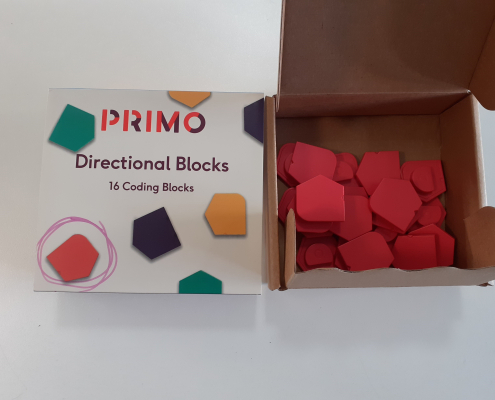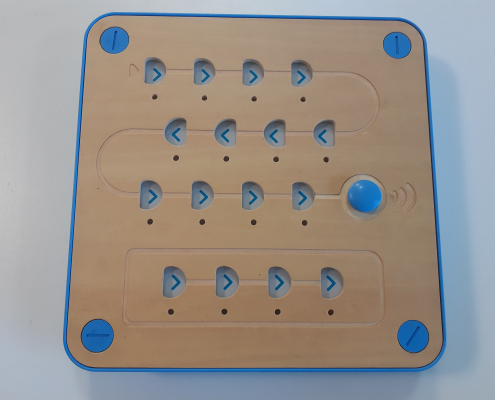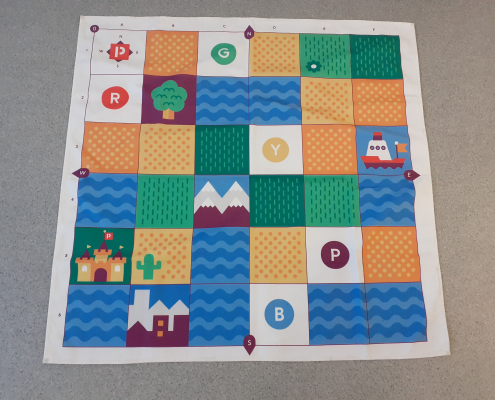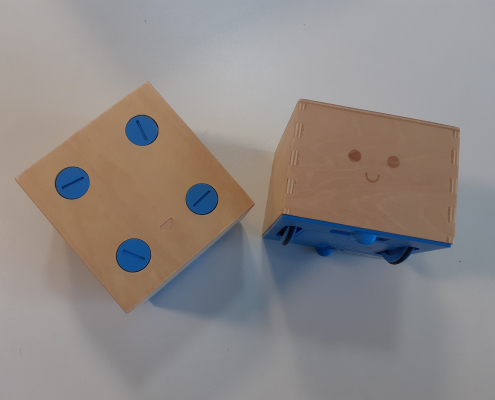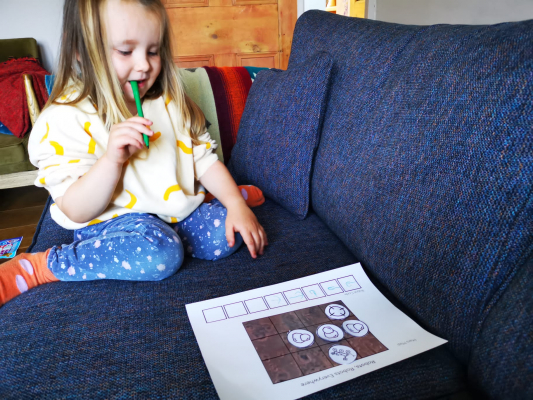Easy-to-use blocks (forward, left, right, backward, function, negation and random) are inserted into the control board and a button is pressed to send the instructions. The Cubetto robot then moves around a play mat. Because there‘s a visual representation of the program ’code’, debugging mistakes is much more achievable than it is with the more common robots which have built-in buttons.
Curriculum links
Key Stage 1 Computing
- understand what algorithms are; how they are implemented as programs on digital
- devices; and that programs execute by following precise and unambiguous instructions
- create and debug simple programs
- use logical reasoning to predict the behaviour of simple programs
What’s in the box?
We have five Cubetto sets – enough to support a whole class activity, if that’s how you wish to use them. Each set comes with a robot, control board, play mat, book of challenges, and a set of programming tiles.
Download the complete contents list here.
Download the hazard identification sheet here.
We have also created some challenges to complete using the Cubetto robots.
Activities to support the use of this box in school and at home
We have an EYFS Play Be C robotics engineer unit which supports the use of the Cubetto robots. Activities include:
- Programming “living” robots
- Using a huge grid to programme a robot
- Junk model robots
- Making circuits
- Using radio controlled cars
Learn how to use a simple code to control a robot by playing our Robot Coding game. You will need scissors, a felt tip pen and our game print outs to play.
Careers links
The Primary Science Teaching Trust has some additional careers links you may like to look at. These are called “A scientist just like me” and introduce children to a diverse range of scientists.
The downloadable power points relevant to this box are:
Computer scientist Daniel Csimszi
Artificial intelligence researcher Krishna Moorogen
Machine learning scientist Kaushik Hatti


